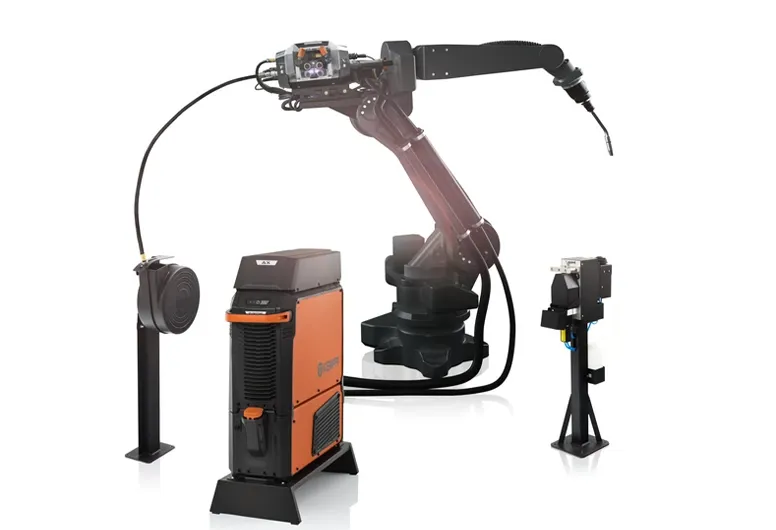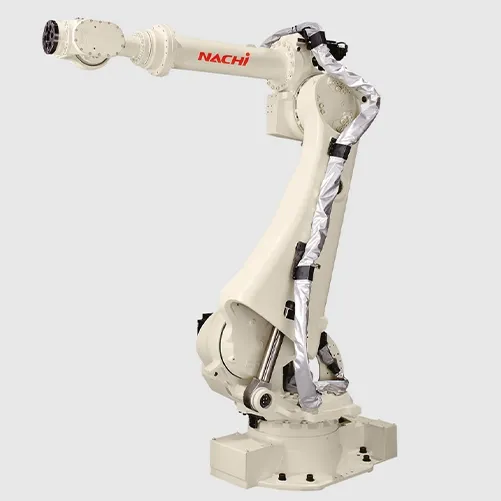Robotic Welding Applications
Robotic welding applications are solutions that ensure the reliable joining of different metals, reducing costs and increasing efficiency in industrial production. In this way, companies gain a competitive edge and achieve sustainable quality in their production processes.
Robotic welding applications are widely used in areas ranging from automotive to construction, from heavy industry to small-scale workshops. Especially in mass production companies, robotic systems provide strong and durable joints on different metals. Thanks to their programmable structures, different welding techniques (such as MIG/MAG, TIG, and laser welding) can be applied on a single line. They improve occupational safety by minimizing the effort workers spend in challenging and risky environments. In the long term, companies gain a competitive advantage by reducing error rates, minimizing waste, and increasing customer satisfaction.
Advantages of Robotic Welding Applications
Robotic welding provides a major transformation in terms of speed, quality, and reliability in today’s production processes. It minimizes human-related errors and ensures consistent results at every weld point. With these technologies, businesses increase production efficiency and lower costs.
Welding automation prevents time loss in companies that carry out mass production. It offers a much faster and safer alternative compared to manual methods. It is indispensable for obtaining consistent-quality joints, especially in serial production processes.
Industrial robot systems are extensively used in sectors such as heavy industry, automotive, and machinery manufacturing. Thanks to their programmable structures, they enable precise joints on different metals. This ensures flexibility and sustainable quality in production.

A robotic production line does not only contribute to welding processes. It also supports quality control and part transportation stages. Thus, businesses can optimize the entire production process. Especially in modern factories, CNC welding robot solutions provide precise results even in the most complex projects, minimizing the margin of error.
The advantages of robotic systems are as follows:
- Completing a high number of welding operations in a shorter time
- Reducing the need for human labor
- Using flexible welding systems suitable for different metals
- Increasing worker safety in hazardous environments
- Performing precise and high-quality welding applications
Automatic welding machines and robotic solutions raise production speed and quality standards to the highest level. Businesses can use these technologies to increase their competitiveness in the global market and achieve sustainable success.
Which Industries Use Robotic Welding Applications?
In today’s production processes, welding robots stand out as technologies that meet the efficiency and quality expectations of various industries. By minimizing welding defects caused by human error, they provide reliable solutions, especially for mass-production companies. For this reason, robotic technologies have become systems preferred not only by industrial giants but also by medium-sized enterprises.
Robotic systems are used in every field where metal joining is intense. With increased production capacity, businesses lower costs and accelerate production speed. In tasks requiring precise welding, they offer a high level of accuracy and bring product quality to global standards.
Robotic welding applications are widely used in the following industries:
- Automotive industry: Provides standard quality in mass production of chassis, bodywork, and exhaust systems.
- Shipbuilding and aviation industry: Offers reliable solutions for critical parts that require durable joints.
- Heavy industry: Creates long-lasting connections in steel construction, pipelines, and machinery production.
- Electronics and white goods production: Increases accuracy rates in the assembly of small and sensitive parts.
- Energy sector: Ensures safe welding in wind turbines, power plant equipment, and pipeline systems.
In short, robotic systems have become powerful tools that transform production lines in various industries. By using these technologies, businesses not only improve production quality but also enhance safety and gain a competitive advantage in the global market. Thus, robot-assisted welding solutions are positioned as a strategic investment for the industry of the future.
Frequently Asked Questions
Robotic welding is the process of joining different metals using automated systems. It minimizes human error and provides fast and reliable results.
They accelerate mass production in a shorter time, reduce the need for human labor, ensure safety in hazardous environments, and guarantee quality joints.
It delivers precise results in challenging projects, minimizes errors on the production line, and supports quality control processes.
It increases production speed, reduces costs, and achieves consistent quality at every joint, boosting customer satisfaction.
No. Robotic production lines also support processes such as quality control and part transportation, optimizing the entire production chain.
By reducing manual work in hazardous environments, they increase employee safety and prevent workplace accidents.
For welding automation solutions tailored to your business, you can contact the Eko Kaynak team.

